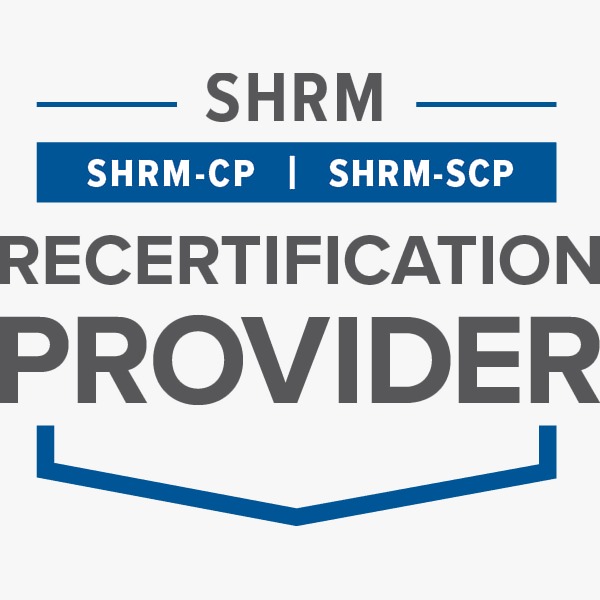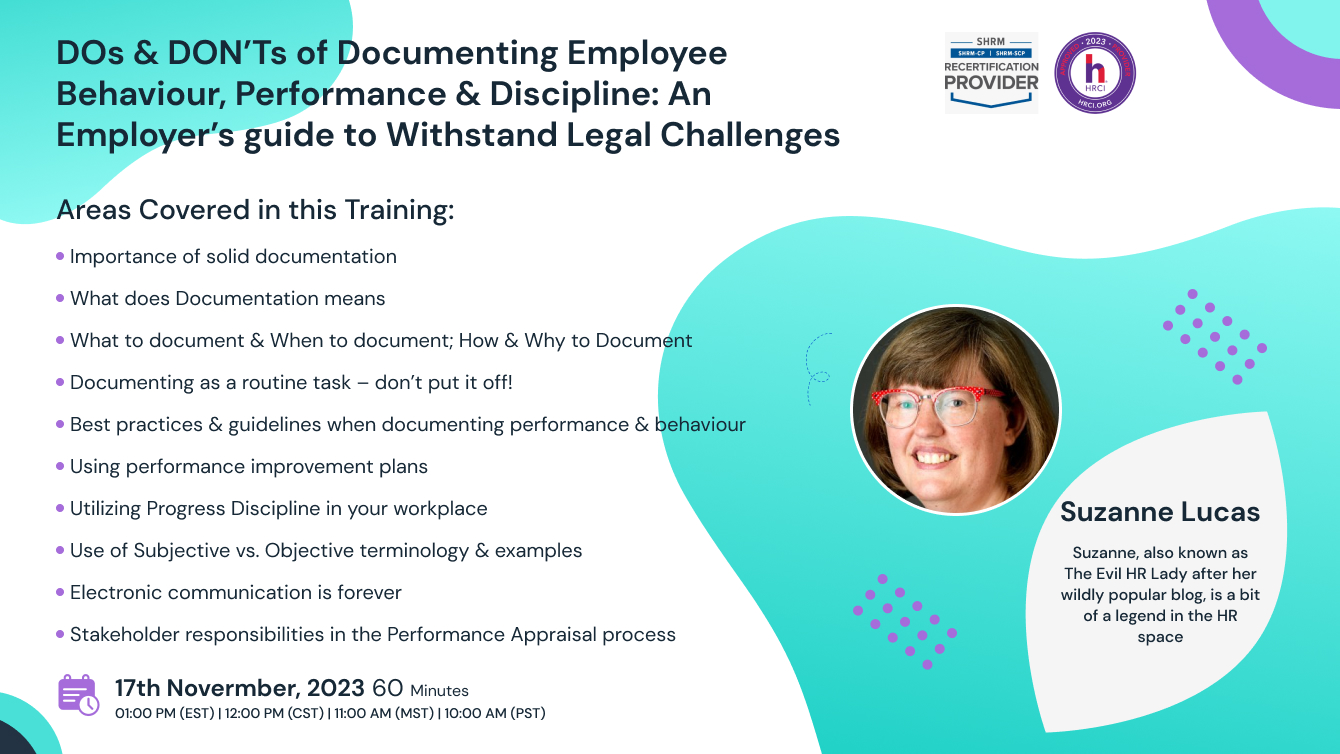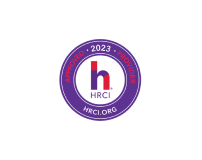Overview:
Everyone tells you to document employee behaviour, but do they tell you how to do it and why you should?
The absence of solid documentation is the single most common mistake employers make when handling employee performance, behaviour and discipline issues. Not properly documenting, or not documenting at all, can hurt employers in several ways.
Solid documentation can make the difference between a clean termination and EEOC lawsuit. Plus, it can make handling performance, behaviour, and discipline issues easy. When you fail to document–or document the wrong things, it puts the company at risk.
This 60 minute webinar with HR expert Suzanne Lucas will cover what to document, how to document and how performance improvement plans fit into this. Learning the DO’S and DON’TS of documentation will make your job easier.
Areas Covered in this Training:
-Importance of solid documentation
-What does Documentation means
-If it isn’t documented, it didn’t happen!
-What to document & When to document; How & Why to Document
-Document the positive
-Documenting as a routine task – don’t put it off!
-Errors & pitfalls when documenting performance & behaviour
-Best practices & guidelines when documenting performance & behaviour
-Analyzing performance & behavioral problems
-Using performance improvement plans
-What is Progressive Discipline?
-Utilizing Progress Discipline in your workplace
-What to do when an employee refuses to sign/acknowledge performance write-ups
-Documentation examples: The good, bad & the ugly!
-Use of Subjective vs. Objective terminology & examples
-Electronic communication is forever
-Assessing the risks of taking action versus not taking action
-Stakeholder responsibilities in the Performance Appraisal process
-Factors that distort performance appraisals
-Common issues when providing feedback & how to overcome them
-Tactics for providing effective feedback
-Goals & key elements of conducting effective investigations of performance & behaviour
-Taking corrective action
-Documentation retention
Why Attend This Training:
Documentation can make or break a manager's ability to discipline, terminate, fairly promote, reward and recognize employees. Additionally, solid documentation will become an employer's best friend when an employee brings discrimination or other employment-related claims against the organization.
Possessing a solid understanding of the do's and don'ts of documenting employee performance, discipline, and behaviour is an essential tool for managers and supervisors because they need to make a serious effort to effectively record all events in the employment history of their employees - both positive and negative.
In this training, you will learn the importance of and how to create effective, bullet- proof documentation, recognize the pitfalls to avoid when documenting, the importance of the performance appraisal process, and understand documentation’s role in investigations and lawsuits.
Suggested Attendees:
-Business Owners
-Human Resources professionals
-Managers & Supervisors
-Project Managers
-Team Leaders
-Compliance professionals
-Operations professionals
-Talent Development professionals
You may ask your Question directly to our expert during the Q&A session

Suzanne Lucas
Suzanne Lucas spent 10 years in corporate HR where she hired, fired, managed the numbers, and double- checked with the lawyers. She left the corporate world to advise people and companies on how to have the best Human Resources departments possible.
Suzanne integrates best practices with innovative ideas and humour, including using improve comedy as a tool for leadership development.
Suzanne’s writings have been published at CBS News, Inc. Magazine, Reader’s Digest, and many other sites. She’s been named a top influencer in HR. You can read her archives at EvilHRLady.org or check out her Tedx Talk: Forget Talent and Get to Work.

SHRM -
Standeagle is recognized by SHRM to offer Professional Development Credits (PDCs) for the SHRM-CPSM or SHRM-SCPSM. This program is valid for 1.0 PDCs for the SHRM-CPSM or SHRM-SCPSM. For more information about certification or recertification, please visit - portal.shrm.org.

HRCI -
This webinar has been approved for 1.0 HR (General) re-certification credit hours toward California, GPHR, HRBP, HRMP, PHR, and SPHR recertification through the HR Certification Institute.
The use of this seal is not an endorsement by the HR Certification Institute of the quality of the activity. It means that this activity has met the HR Certification Institute’s criteria to be pre-approved for re-certification credit.

ACCREDITATIONS


